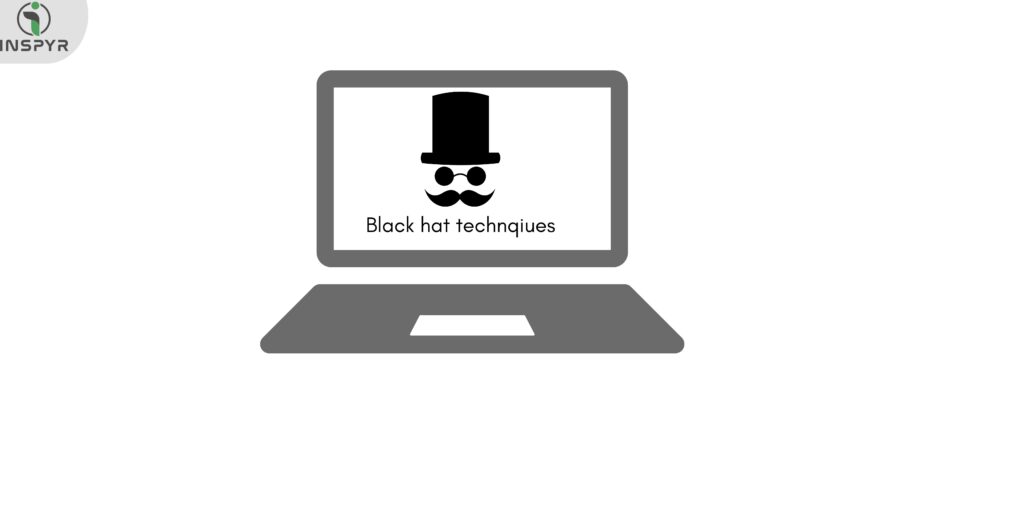Search Engine Optimization (SEO) Understanding black hat SEO the dangers of unethical practices is essential for improving a website’s visibility on search engines like Google. However, not all Black HatsSEO practices are created equal. While there are ethical, white-hat techniques that focus on providing real value to users, there are also unethical, black-hat techniques that attempt to manipulate search engine rankings. These tactics often involve deceptive practices that violate search engine guidelines and can result in serious consequences, such as penalties or complete removal from search results.
In this blog, we’ll dive deep into the world of Black Hat SEO techniques, explore how they work, and discuss why they’re not worth the risk. Let’s also take a look at the best ways to protect your site from these harmful tactics.
What is Black Hat SEO?

Black Hat SEO Understanding black hat SEO the dangers of unethical practices refers to a set of unethical practices aimed at boosting a website’s rankings in search engine results, often by circumventing the rules set by search engines. These techniques exploit loopholes in search engine algorithms, but because they violate Google’s Webmaster Guidelines, they are considered unethical and can lead to penalties, reduced rankings, or a website’s removal from search results.
While Black Hat SEO tactics can provide short-term gains, they often harm long-term growth. When caught, websites engaging in these practices can suffer significant drops in traffic and credibility.
The Most Common Black Hat SEO Techniques
1. Content Manipulation

Keyword Stuffing
Keyword stuffing involves overloading content with an excessive number of keywords in a way that makes the content difficult to read or unnatural. The idea behind this is to trick search engines into ranking the page higher for specific search terms. However, this makes the content far less valuable to users. For instance, a keyword-stuffed sentence might look like:
“Buy cheap T-shirts. Cheap T-shirts online. Affordable cheap T-shirts.”
Instead, use keywords naturally and in moderation to maintain the quality and readability of the content.
Cloaking
Cloaking refers to showing different content to search engines than what users see. This is often done by delivering keyword-rich pages to search engines while displaying normal, user-friendly content to visitors. It’s a deceptive practice because it tricks the search engine into ranking the page higher than it should. Cloaking is a direct violation of search engine guidelines and can result in penalties.
Duplicate Content
Duplicate content is when a website uses identical or very similar content across multiple pages or even copies content from other websites. While it may seem like a quick way to populate pages, search engines may penalize sites with duplicate content. Instead of copying and pasting, always strive to create unique and original content.
Hidden Text or Links
This involves using hidden text or links to manipulate search rankings. For example, putting keywords in white text on a white background or making text very small makes it invisible to users but still readable by search engines. This tactic is a form of deception and can lead to penalties once discovered.
2. Link Manipulation

Paid Backlinks
Buying backlinks is one of the most common Black Hat SEO practices. Paid links can result in penalties or removal from search results.
Link Farms
A link farm is a network of websites that exist solely for the purpose of trading links to increase search rankings. These sites don’t provide real value to users but are designed to manipulate search engines. Joining or creating link farms is a violation of search engine guidelines and can lead to penalties.
Spammy Comments
Posting links in blog comments or forums without adding any real value to the conversation is another form of Black Hat SEO. These comments are often generic or irrelevant and exist purely to build backlinks. To avoid penalties, always ensure that comments are relevant and constructive.
Over-Optimized Anchor Text
Anchor text is the clickable text in a hyperlink, and using exact-match anchor text repeatedly can look unnatural to search engines. This is a tactic used to manipulate rankings by targeting specific keywords. Instead, use a variety of anchor texts, including branded terms, partial keywords, and natural phrases.
3. Misleading Practices

Clickbait Titles
Clickbait titles are designed to get users to click on a link by using sensational, misleading headlines. For instance, a title like “You won’t believe what happened next!” may encourage clicks, but if the content doesn’t live up to expectations, users will quickly bounce, which increases your bounce rate. Focus on crafting titles that are accurate and reflective of the content.
Fake Reviews
Posting fake positive reviews to boost credibility or creating fake negative reviews to damage competitors is another unethical practice. Reviews should always be honest and come from real customers. False reviews undermine trust and can result in penalties from search engines and damage a brand’s reputation.
. Make sure your website follows security best practices to protect user data and maintain trust.
4. Technical Manipulation

Sneaky Redirects
A sneaky redirect occurs when users are sent to one page, but search engines are directed to another. This practice is often used to trick search engines into ranking a page higher, while users end up on irrelevant or misleading pages. Redirects should always be used ethically and transparently.
Automated Content
Using bots or automated tools to generate low-quality content is another form of Black Hat SEO. While it might seem like a time-saving method, these automatically generated pieces often lack depth, accuracy, and user engagement. Google values quality content, so automated content rarely performs well in search results.
Doorway Pages
This tactic manipulates search engines into ranking pages based on specific keywords, but the user experience is poor. Google and other search engines can identify doorway pages and may penalize them.
Hacked Websites
Sometimes, Black Hat SEO practitioners hack into other websites and insert spammy content or links into those sites. These links are then used to boost the ranking of the hacker’s site. Hacking is illegal, and participating in this practice can lead to severe consequences.
5. Behavior Manipulation

Pogo-Sticking Manipulation
Pogo-sticking occurs when a user clicks on a search result, quickly leaves the page, and clicks on another result. This behavior is usually simulated by bots to create the illusion of user engagement, thus tricking search engines into thinking the page is more relevant. However, search engines are increasingly sophisticated at detecting this type of manipulation.
Traffic Bots
Using bots to inflate website traffic artificially is a common Black Hat practice. These bots mimic human traffic patterns but don’t provide any real value. Although it may seem like your website is popular, search engines will eventually detect the discrepancy and penalize your site for the fake traffic.
6. Behavior Manipulation

Content Scraping
Content scraping involves stealing content from other websites and republishing it as your own. This not only infringes on copyright laws but also undermines your site’s authority. Always create original, valuable content to stay compliant with search engine guidelines.
Private Blog Networks (PBNs)
. PBNs are risky, and if caught, websites relying on these networks can face severe penalties.
How to Protect Your Website from Black Hat SEO Practices
- Follow White-Hat SEO Practices:
Focus on creating high-quality content, building natural backlinks, and improving the user experience. White-hat SEO is a sustainable approach that helps build long-term success. - Conduct Regular Audits:
. This includes checking for hidden text, duplicate content, and unnatural backlinks. - Stay Updated with Google’s Guidelines:
Google frequently updates its guidelines and algorithm to prevent manipulation. Stay informed about these changes to ensure compliance with best practices. - Monitor Website Traffic:
Keep an eye on your website’s traffic and engagement metrics. - Build a Strong Brand Reputation:
Focus on delivering great content and creating positive user experiences. A strong reputation built on trust will help your website perform well naturally without resorting to Black Hat tactics.
Conclusion
Black Hat SEO Understanding black hat SEO the dangers of unethical practices may seem tempting due to its potential for quick rankings, but it’s simply not worth the risk. The penalties, damage to your site’s reputation, and loss of credibility can be devastating in the long run. Instead, focus on ethical, white-hat practices that prioritize quality content, transparency, and user satisfaction. With patience and consistency, you can achieve sustainable SEO success while avoiding the dark side of optimization.
MK Ad Agency https://mkadagency.info/
